The 2021 census shows older average age of Irish people in England and Wales
The Office of National Statistics (ONS) has released data on the sex and age characteristics of ethnic groups using 2021 England and Wales Census data.
Key findings:
The White Irish have a substantially older age profile than the White British population.
White Gypsy/Irish Travellers have a significantly younger age profile than the White British population.
There is now a slightly greater percentage of over 65s in the Irish population in England and Wales than ten years ago.
Over 65s now represent almost one-third of the White Irish population in England & Wales (up from one-quarter in 2001).
The proportion of Irish people who have reached 100 is 1½ times higher than the rest of the population in England and Wales.
As highlighted in our previous articles analysing data from this census, it is important to note that ONS ethnicity figures do not capture the diversity of the Irish community in Britain today. Conflating 'Irishness' with 'Whiteness' is inaccurate and problematic. We will continue to make recommendations to the ONS to address this omission and better capture diversity in the UK.
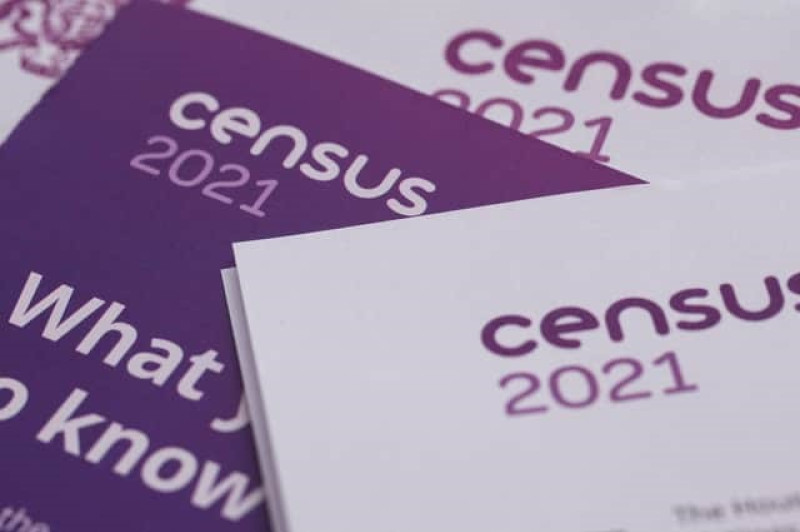
Once more detailed Census data is released in the coming months, it will be possible to get a more nuanced picture, including the intersection of variables such as Ethnicity, Country of Birth and Passport-Held, as well as the results of the 'write-in' questions in the Census questionnaires.
Older average age
The new data shows that those who identified as White Irish had one of the oldest average ages across the 19 tick-box ethnic group options in the census.
The White Irish had an average age of 54 years, compared with an average of 40 years in the overall population of England and Wales. There was a small increase in the average age of the White Irish over the past decade, up from 53 years in the 2011 Census data.
Of the other ethnic groups analysed in this data set, only White Maltese, with a median age of 56, and Anglo Indians, with a median of 65, are older than the White Irish.
In 2021, nearly a third (32.1 percent) of the 507,465 White Irish residents were aged 65 years and over; this compares with less than a fifth (18.6 percent) among the overall population of England and Wales.
Since 2011, the percentage of over 65s changed by +1.4 percent for the White Irish, +3.7 percent for White British and +2.2 percent for all ethnic groups in England and Wales. Though the White Irish are ageing, it is generally on trend with other ethnic groups. Again, this marks only a slight increase from the 2011 Census, but it is more significant when compared to the 2001 data, when 25 percent of the White Irish were aged 65 or more.
Notably, a higher proportion of White Irish females were aged 65 years and over (35.4 percent) than males (28.7 percent).
This latest data release also offers insights into the demographic profile of those who identified as "Gypsy or Irish Traveller". This population has a strikingly younger profile, with a median age of just 28 years, observing a small increase to the median of 26 years recorded ten years ago.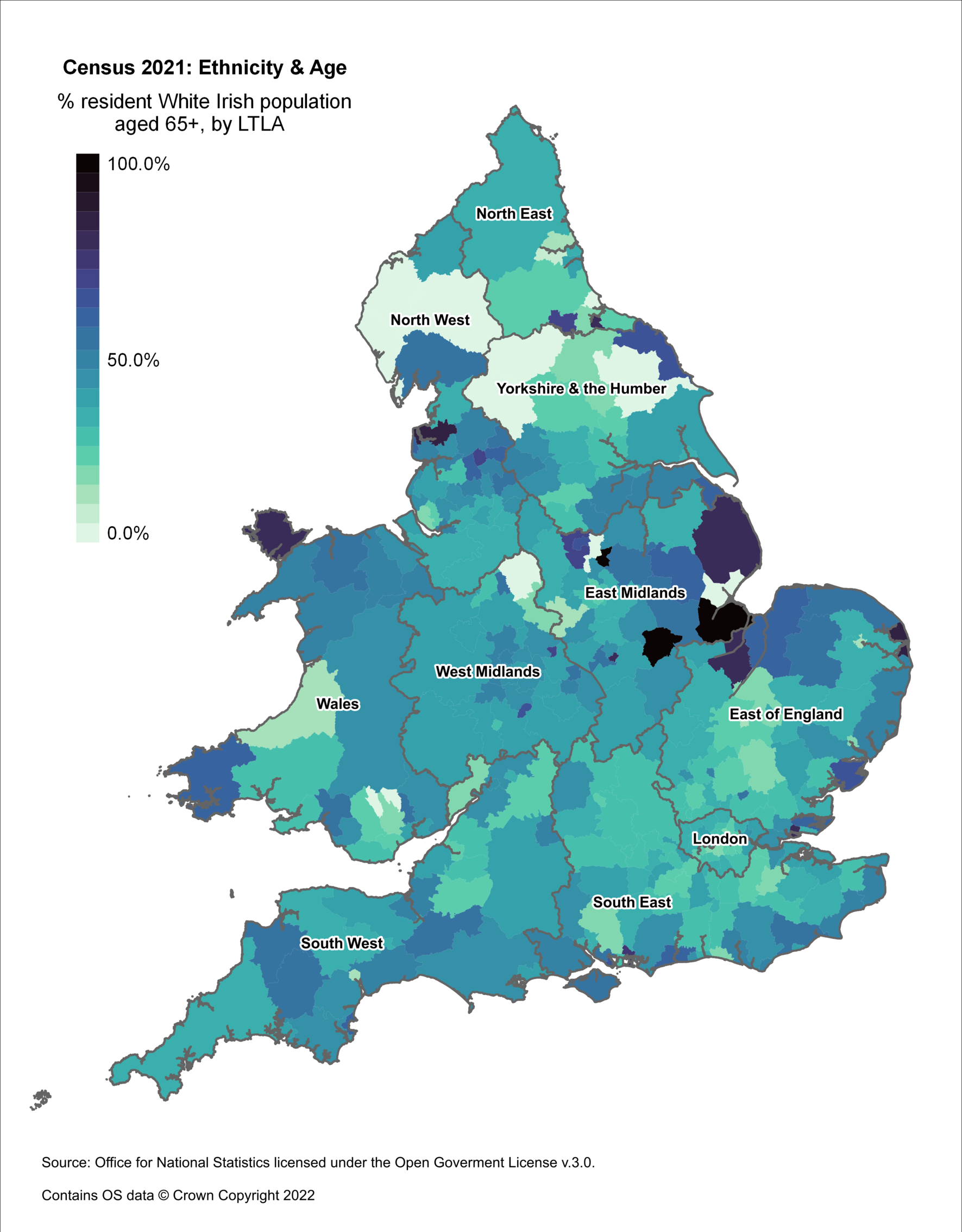
A geographical analysis of the data also shows variability across English regions, with the average range of White Irish from 49 years in the North East to 59 years in the West Midlands.
Our team of researchers say that while this release is consistent with trends seen in previous censuses, the overall picture emerging from the data is complex and raises important questions about changing demographics across England and Wales.
The analysis, led by the University of Nottingham, has produced several graphs which help visualise these data patterns and trends (see below).
Fig. 1 - White Irish population compared to the White British population
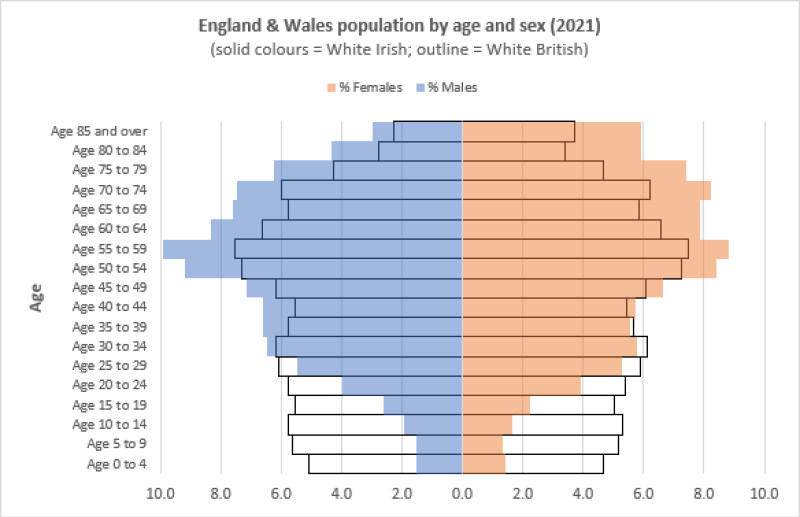
Figure 1 shows the distribution of age groups across the White Irish and White British populations in England and Wales.
This shows an older White Irish population, continuing a trend we have observed over the last several censuses (see fig.2).
Fig. 2 - White Irish population in 2021, compared to 2011
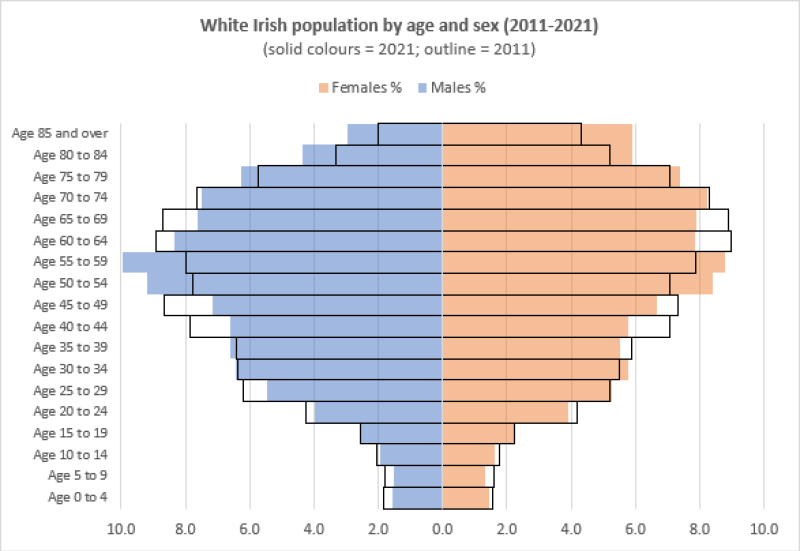
The age and sex distribution of the White Irish in England and Wales remains broadly consistent with the 2011 census, highlighting a continuation of demographic trends and themes.
Figure 3 (above) shows how the proportion of White Irish residents aged 65 or over varies significantly across England and Wales.
Fig. 4 – 'White Gypsy and Irish Traveller' population compared to the 'White British'
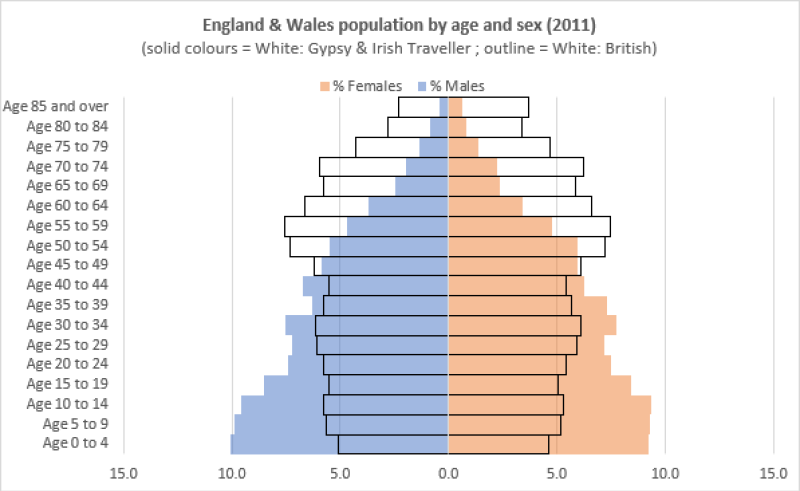
Figure 4 displays the age distribution between the White-British population and those who identified as White-Gypsy and Irish Traveller.
There is a substantial number of young people (under 24) and fewer older people in the White Gypsy and Irish Traveller community. This pattern has remained consistent over the past decade.
Figure 5 - Tracking the size of the older population over time – 2001 to 2021
Finally, the chart in figure 5 summarises the population trends over the past three decades (2001, 2011 and 2021 Censuses).
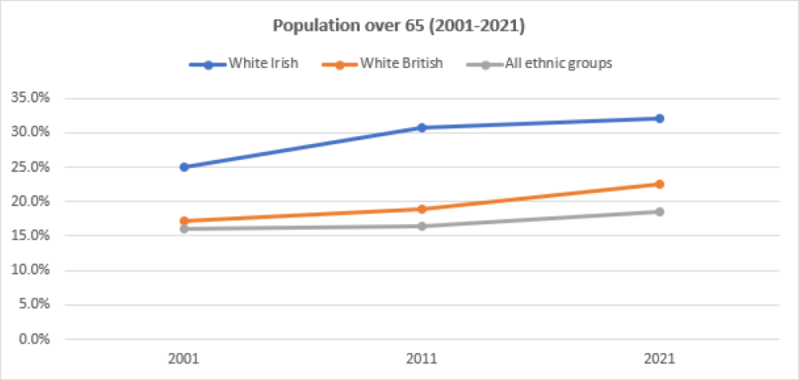
As previously reported, the size of the White Irish population in England in Wales has decreased, likely due to the ageing demographics.
While the White Irish had one of the oldest average ages across all ethnic groups, the percentage of over 65s has stayed relatively consistent over the past decade.
Overall, these statistics indicate significant demographic changes across the ageing Irish population over the past 20 years, and reinforces the need for responsive health services and social care support.
* About this project - This census report is part of a collaborative project between Irish in Britain and a team of researchers led by Dr Alessio D'Angelo, Associate Professor at the University of Nottingham, and which includes Dr Neil Kaye, Research Fellow at UCL's Institute of Education, Dr Alastair Munro, Researcher at the University of Nottingham, and Professor Louise Ryan, Director of Global Diversities and Inequalities Research Centre at London Metropolitan University.
To go back to main Census analysis page click here.